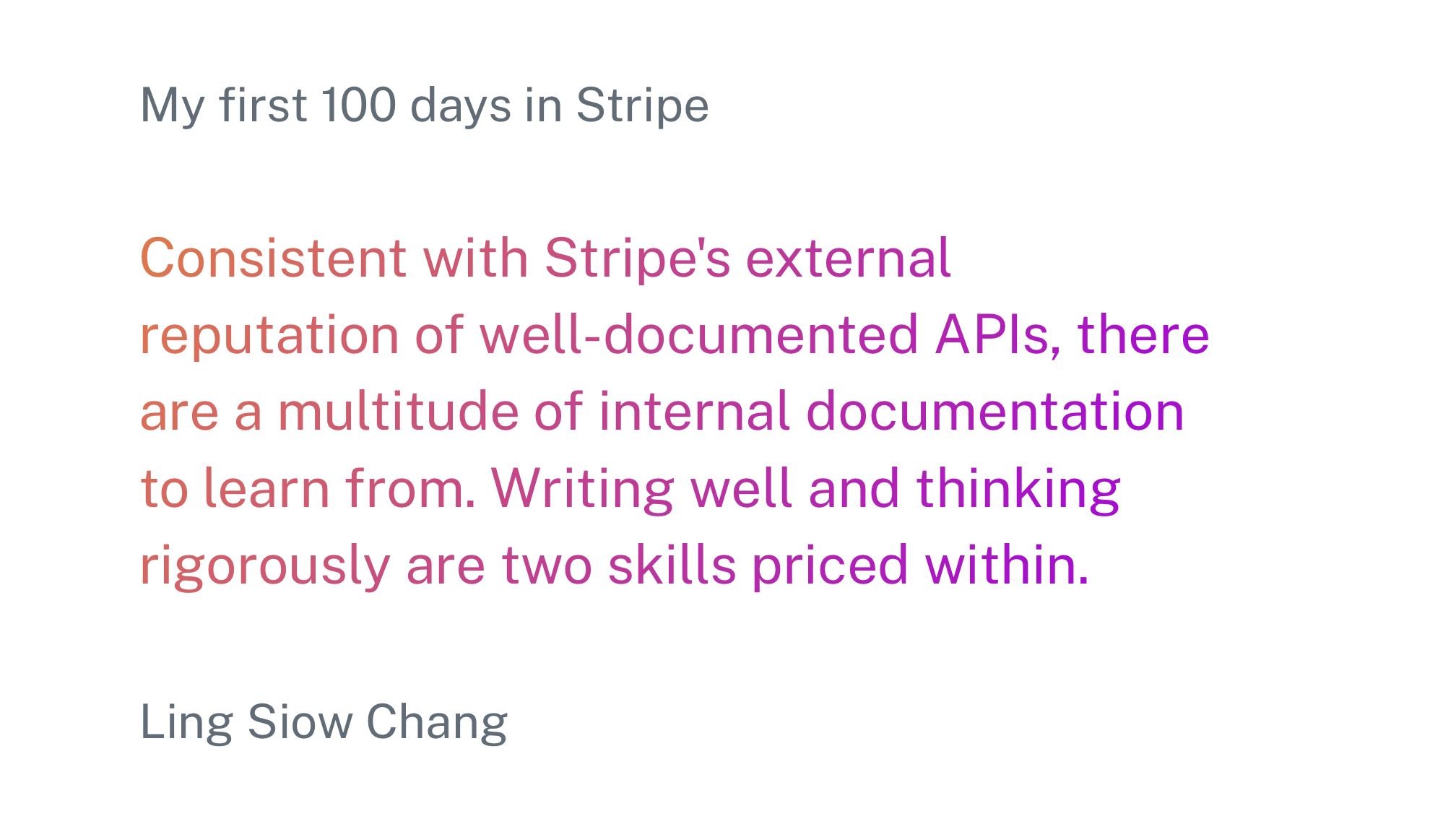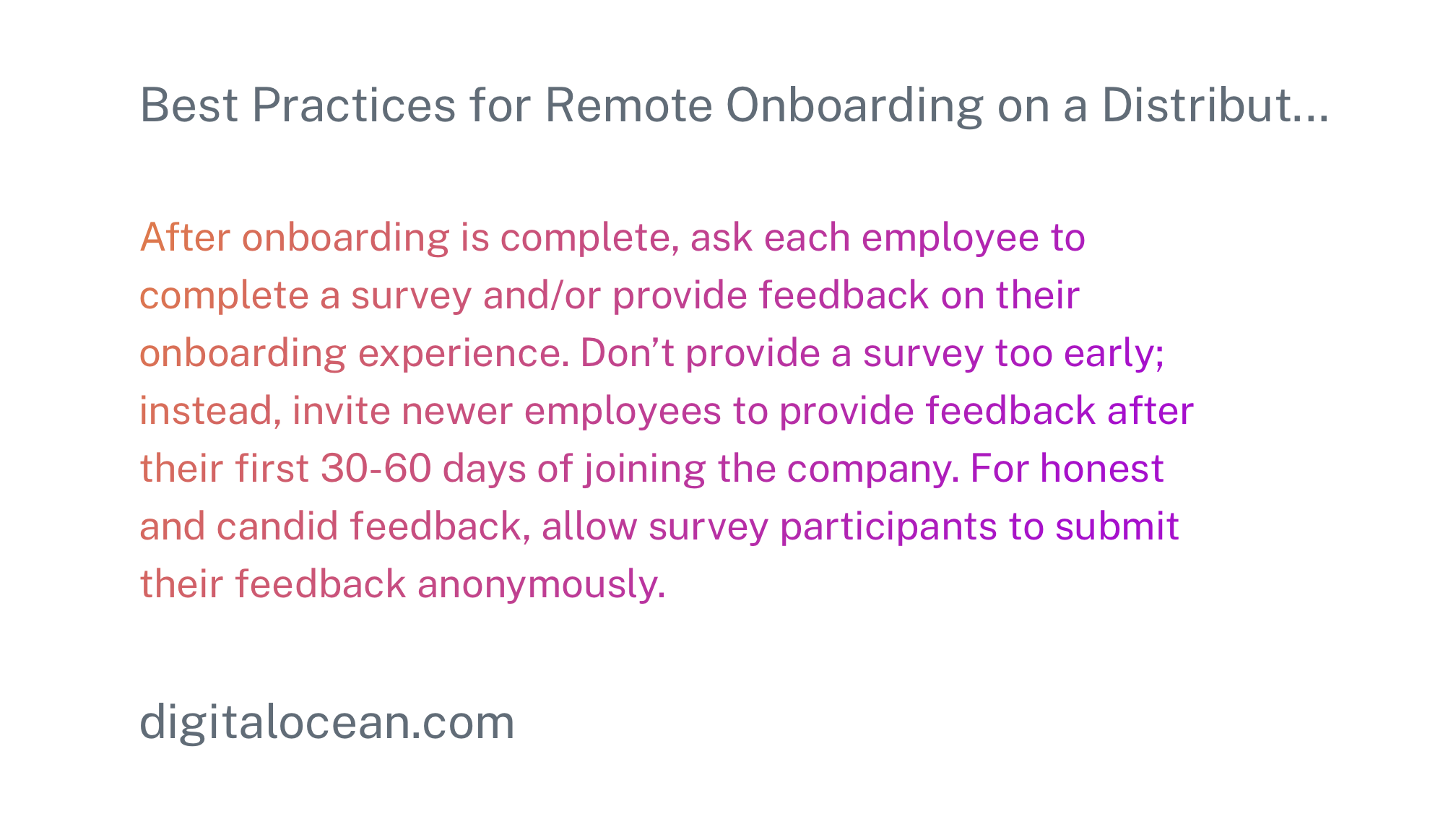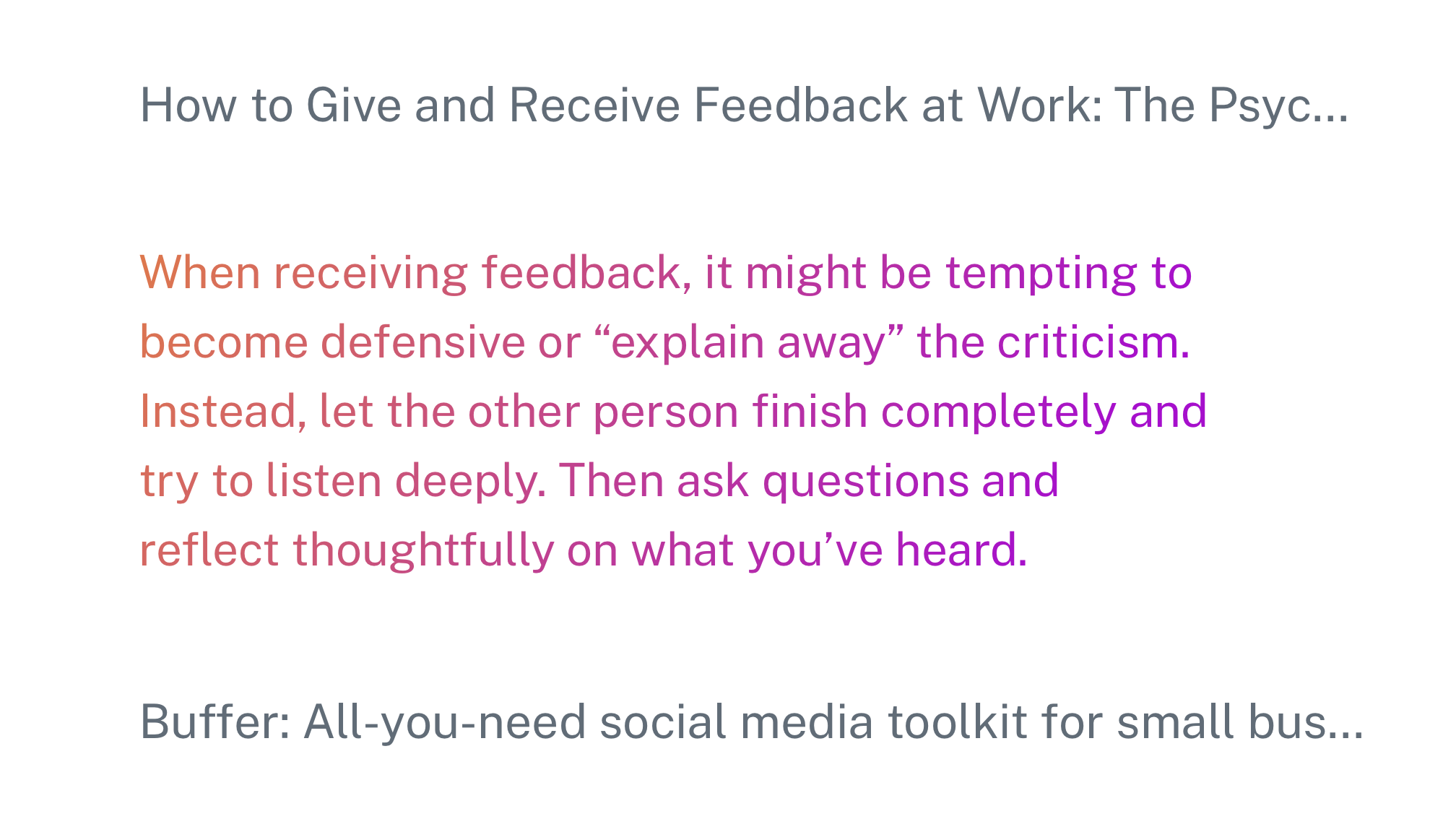
It's your first day on the job. You scoot your chair towards your desk, fire up your laptop, and uhh...what next? 😬
This is not really the situation you want your onboards to experience.
Whether you're a remote company or not, having documentation available for your new hires makes it so much easier.
Want to order your swag? We got an article about that.
Need to order some equipment? Here's how.
Who's the canteen manager where I get my food pass? Look over here.
You probably get the point. Having a place to view this kind of stuff really helps ease the new hire in. The first days are scary, y'all.
In this post, we'll explore some examples of why and which processes/articles you might find helpful to document for new hires.
One of the most crucial aspects of setting up new hires for success is documentation. Yep, those trusty guides, manuals, and how-tos can make or break an employee's first few weeks on the job.
Here's the thing—creating effective onboarding documentation isn't just about throwing together a bunch of bullet points and calling it a day. It's about strategically integrating documentation into your onboarding flow to create a seamless, engaging experience that sets your new hires up for long-term success.
So, let's dive in and explore how you can level up your onboarding game with documentation!
Understanding the Role of Documentation in Onboarding
First things first: why is documentation so important in the onboarding process?
Well, let's think about it.
When a new hire joins your team, they're basically jumping into a whole new world filled with unfamiliar processes, tools, and expectations. It's like being dropped into a foreign country without a map or a phrasebook—pretty overwhelming, right?
That's where documentation comes in.
By providing clear, comprehensive guides to your company's workflows, policies, and procedures, you're giving your new hires the best chance to succeed. Not only does this help them get up to speed faster, but it also:
- Reduces the time and resources needed for training
- Ensures consistency in how tasks are performed
- Minimizes errors and misunderstandings
- Provides a reference point for future questions or concerns
In short, having a structured documentation system in place can make a world of difference in streamlining your onboarding process and setting your new hires up for success.
Building an Effective Onboarding Documentation Strategy
Okay, so we know documentation is important. But how do you actually go about creating it? Here are a few things to keep in mind.
Deciding What to Cover in Your Documentation
Alright, now that we've established the why, the next big question is: What exactly do you document?

It's like standing in front of a buffet, and you can only pick so much before your plate's overflowing. You want to make sure you're choosing the stuff that's going to give your new hires the best start.
Here's an example approach to figuring that out:
- 🔎 Identify the Basics: Start with the absolute must-knows for day one. This could mean how to access their email, where to find key company policies, and how to clock in and out. Think of it as the 'starter pack' for your newbies.
- ⚜️ Task Flows Are Gold: Jot down the common tasks your team performs and outline the steps to complete them. This not only helps new hires understand their responsibilities but also paints a picture of daily life at the office (or home office!).
- 🤔 Question Time: Think back to the questions you or your colleagues had when you first started. Better yet, ask your current teammates what they wish they had known from day one. This real-life FAQ can guide the creation of super helpful content.
- 🛠️ Tool Talk: If your team uses specific tools or software, including guides or tutorials on these, it can save a lot of headaches. Whether it's a detailed guide or a link to existing resources, make sure your new hires aren't left trying to Google their way out of confusion.
- 📕 Culture Corner: Don't forget about the less tangible, but equally important, aspects of working at your company. How do you celebrate wins? What's the protocol for suggesting new ideas? Documenting the cultural vibes gives your new hires a peek into what makes your company tick.
- 🧑⚖️ Legal and Financial Literacy: Diving into the important stuff—legal documents, taxes, salary information, and more. It's less intimidating for newcomers if they have a clear guide on handling these. Where to submit tax forms? Who to talk to about salary or benefits? Keeping this information accessible aids compliance and shows you care about their well-being and job satisfaction from the start. Plus, simplifying the paperwork is always wise. No one likes feeling overwhelmed, especially with their paycheck and legal responsibilities.
Remember, the goal here is not to overwhelm with information but to strategically select the documentation that empowers your new hires to feel confident, informed, and ready to tackle their new roles.
It's all about making that first day (and beyond) as smooth as possible.
Create engaging and informative content
Nobody enjoys sifting through a monotonous wall of text, which is why it's crucial to make your documentation visually appealing and easy for readers to absorb.
Incorporate images, videos, and interactive elements to add variety to your content, effectively breaking it up and maintaining the engagement of your new hires.
These multimedia elements not only make the information more accessible but also enhance the learning experience, making it more memorable and engaging for everyone involved. By doing so, you ensure that your documentation is not only informative but also enjoyable to go through.
Ling Siow Chang wrote about their first 100 days at Stripe, which involved well-written documentation:

If good writing is part of your company culture, that's a good way to go. Good writing doesn't involve walls of text—it's about taking complex ideas and turning them into something digestible for everyone.
If you're a business that provides podcast software, maybe you incorporate that into your documentation. Why not attach a podcast episode that dives deeper into the subject as a sort of bonus content in case they'd like to know more?
We use HelpDocs. By doing so, we not only find exciting new ways to develop the product to make it easier for our customers to use, but our new hires also become familiar with the platform.
Authoritative vs. Wiki
When it comes to internal documentation, there's a fork in the road—should you pursue authoritative documentation or adopt a collaborative approach with wiki-style documents?
Authoritative documentation is like having a single source of truth. It's usually curated by a few knowledgeable insiders, making it reliable and consistent. Think of it as the official manual from the company to its employees. It's great for stuff that doesn't change often or when you need everyone to be on the exact same page (quite literally).
On the other flip of the page, wiki (collaborative) documentation is more like a group project. Everyone can chip in, edit, and update. It's dynamic and grows with the collective input of the team.

This democracy of information is fantastic for rapidly changing environments or when you want to tap into the collective wisdom of the crowd.
Now, you might be thinking, "Which is the best approach?" Well, here's a twist—why not both?
A hybrid model could be the golden ticket for most companies.
This approach allows for the solidity of authoritative documents on the non-negotiables, like legal policies or brand guidelines, while also harnessing the power of collaboration on more fluid, experience-based knowledge, like project specs and check-ins.
Integrating Documentation into the Onboarding Flow
Creating great documentation is one thing, but how do you actually incorporate it into your onboarding process? Here are a few best practices to keep in mind:
- Make it accessible: Your documentation should be easy for new hires to find and access from day one. Consider creating a central hub or portal where they can find all the resources they need. You might call this an intranet or something branded to make it more fancy 💅
You might also have an email sequence. Be sure to include a few links here and there so your new hires can read topics in more detail. - Incorporate it into your onboarding schedule: Don't just hand your new hires a stack of documents and call it a day. Make sure to carve out dedicated time in your onboarding schedule for them to review and engage with the documentation.
- Encourage questions and feedback: Your documentation should be a living, breathing thing that evolves over time. Encourage your new hires to ask questions and provide feedback on how the documentation can be improved. During 1:1s and check-ins, create an atmosphere where employees feel totally okay with giving honest feedback about the documentation.
Measuring Success and Making Improvements
Just like any part of your onboarding process, keeping tabs on how well your documentation is doing and always looking to make it better is super important.
Let's talk about someone named Alex. During their onboarding, they ran into a bunch of issues with the documentation. It was loaded with tech speak they didn't get, links that didn't work, and some parts were so old they talked about software the company doesn't even use anymore.
Despite all this, Alex chose not to speak up. They thought maybe it was just them finding it hard to adjust, or they were worried about sounding too critical right off the bat.

Our content in monthly bitesized emails
Get our best content delivered straight to your inbox.
SubscribeJump ahead a few months, and a new group of hires runs into the same problems. This time, things are even trickier because there have been big updates and the documentation hasn't caught up. The new folks end up feeling lost and stressed, which means it takes them longer to get going and adds unnecessary stress.
This keeps happening because the value of ongoing feedback on onboarding docs got missed. To dodge this, make it a point to regularly review your onboarding materials.
When to Seek Feedback on Onboarding Documentation
Asking for feedback on documentation isn't a one-and-done affair—it should be an ongoing conversation throughout the onboarding process.
Here are some key moments when it's particularly effective to check in:
- Midway Through Onboarding: By this point, they've been with the company for a bit, getting their hands dirty. They've likely encountered situations where the documentation was either a lifesaver or fell short. This mid-point check-in can reveal if the documentation is truly helpful in the day-to-day roles of the newcomers.
- End of Onboarding: Reflection at the end of the onboarding process provides insights into the overall effectiveness of the documentation. By now, they should have a well-rounded view of how the documentation helped them settle in and where improvements can be made for future hires.
- Follow-Up After the First Project or Quarter: Once they've completed their first major project or have been with the company for a few months, ask again. Their feedback can include more depth based on their experiences, offering valuable insights for refining the documentation process.
DigitalOcean recommends waiting a little bit of time to ask for feedback and to allow them to submit them anonymously:

Incorporating these feedback loops at strategic points in the employee onboarding timeline ensures that your documentation remains dynamic, effective, and truly beneficial for every new team member that comes onboard.
Tracking Employee Satisfaction with Documentation and Onboarding
Getting your documentation and onboarding process just right is super important, but how do you know if you're hitting the mark? Well, tracking employee satisfaction is key.
It's like having a compass that guides your onboarding improvements. Here's the lowdown on how to keep tabs on those vibes:
- 📖 Surveys and Feedback Forms: These are your best friends for collecting insights. Make sure to send out surveys or feedback forms at those critical points we talked about earlier. You can mix in some rating scale questions (like from 1 to 10) with open-ended ones to really get into the nuts and bolts of their experiences.
- 🗣️ One-on-One Meetings: As I mentioned earlier, these are golden opportunities to dig deeper. Sometimes people are more open in a one-on-one chat than in a survey. Use these moments to ask about their personal experience with the documentation and the onboarding process as a whole. It's a great way to catch any issues or ideas that might not come up in a survey.
- 👋 Group Discussions: Sometimes, a group setting can spark thoughts that individuals might not consider on their own. Holding a focus group with new hires after they've settled in can provide diverse insights and foster a sense of community among team members.
- 📈 Onboarding Metrics: Keep an eye on metrics like time-to-productivity, turnover rates in the first year, and how often new hires seek help after their initial onboarding. These numbers can give you a hint about where your onboarding and documentation might need tweaking.
- 📼 Regular Review Sessions: Establish regular intervals for reviewing feedback and metrics with your HR team or onboarding specialists. This practice helps ensure that improvements are continuously made and that the onboarding process evolves with the company's needs.
Remember, tracking employee satisfaction with your documentation and the onboarding process isn't a one-time deal. It's about creating a loop of feedback and improvement that keeps your onboarding fresh, relevant, and super engaging.
Fostering a Company Culture of Openness and Rejecting Defensiveness
Creating a company culture that embraces openness and shuns defensiveness can seriously level up your onboarding process.
Here's the thing, when new folks feel comfy enough to share their thoughts and questions without the fear of criticism, magic happens.
They're more likely to highlight areas where your documentation or processes might be missing the mark. Plus, this open dialogue can lead to innovative ideas for making everything smoother for the next group of hires.
Why It Matters
Think about it. If someone like Alex from earlier felt okay saying, "Hey, I'm not getting this, can we update it?" without worrying about sounding too critical or uninformed, we could've nipped those issues in the bud way sooner.
A culture that rejects defensiveness and encourages open dialogue means feedback is not just welcomed; it's sought after. It transforms feedback from being something potentially confrontational into a positive, constructive tool for growth.
How to Cultivate This Culture
- Lead by Example: Leaders and HR need to show they're open to feedback—no matter if it's good, bad, or ugly. When leadership shows they can take constructive criticism without getting defensive, it sets the tone for everyone else.
- Regularly Encourage Feedback: Don't just wait for formal reviews. Make asking for feedback a regular part of meetings, emails, and one-on-ones. Show that every opinion counts.
- Celebrate Constructive Criticism: When someone offers feedback that leads to a change or improvement, celebrate it. It shows that not only is feedback welcome, but it genuinely makes a difference.
- Provide Training on Giving and Receiving Feedback: Sometimes, people are defensive because they're not used to giving or receiving feedback constructively. Offering training can help everyone communicate more effectively and reduce misunderstandings.
- Make It Safe: Assure everyone that their job isn't at risk for speaking up. People need to feel secure that they can raise concerns without negative repercussions.
Buffer's former Director of People, Courtney Seiter, shared a piece of advice about listening rather than reacting to feedback:

Impact on Onboarding
When new hires enter into a culture that's all about openness, their onboarding experience is not just about learning the ropes; it's about being a valued voice from day one.
They'll contribute to an ongoing conversation that enhances the process, not just for them but for everyone who comes after. It fosters a sense of belonging and community, making those first few months less about stress and more about becoming an integral part of a team that genuinely listens and adapts.
Ultimately, fostering this environment turns your onboarding process into a dynamic, continuously improving system powered by the very people it aims to serve.

It's about making onboarding less about ticking boxes and more about building connections and growing together.
Examples of Key Onboarding Documentation Articles and Their Purposes
Creating a killer collection of onboarding docs is key to getting newbies up to speed without a hitch.
Here's the lowdown on some specific docs you might wanna include and why they're important:
- Company History and Vision: Kick things off with a story about your company – how it all started, the major milestones, and where you're headed. This helps new folks feel a connection to the company and get the big picture they're now a part of.
- Organizational Structure and Team Overviews: Lay out how the company is organized and give a snapshot of each department or team. This info is gold for helping newbies figure out where they fit and who does what.
- Policies and Procedures Manual: Super important to have a guide that covers all the rules, from the code of conduct to leave policies, expense reports, and beyond. It keeps everyone on the same page and helps avoid mix-ups later.
- Role-Specific Training Guides: On top of the general company info and policies, these guides dive into the specifics of what new hires need to know for their particular jobs. Think workflows, tools, goals, and where to get help. It's all about making the leap to their new role as smooth as butter.
- FAQs for New Hires: Put together a list of questions new hires are likely to ask. This could cover everything from how to use certain tools, who to call for IT help, to where to find stuff. An FAQ section can cut down on repeat questions and lets new hires help themselves.
- Health, Safety, and Emergency Procedures: Make sure you've got clear info on health and safety, including emergency action plans. This stuff is vital for keeping everyone safe and meeting legal stuff.
- Benefits and Perks Information: Spelling out all the cool benefits and perks your company offers can really get employees excited from the start. Cover how to use these benefits, who's eligible, and who to talk to for more info.
By including these types of onboarding docs, you're meeting the varied needs of new hires, filling them in on everything they need to succeed, and making them feel at home and in the loop about the company culture.

This hands-on approach to onboarding docs is a big win for getting a happy, engaged, and productive crew from the get-go.
Set New Hires Up for Success
Phew, that was a lot of information! But hopefully, you're now armed with some actionable tips and strategies for building documentation into your employee onboarding flow.
Remember, effective onboarding documentation is all about setting your new hires up for long-term success. By providing them with the resources and support they need to navigate their new environment, you're not just making their lives easier - you're also building a stronger, more productive team.
So go forth and create some awesome documentation—and don't forget to have some fun with it!
Happy onboarding!





